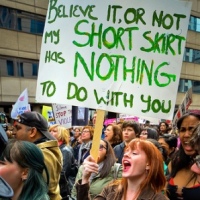Well, I haven’t been here much lately, owing to family responsibilities, ill health, & various other matters like writer’s block and such.
This Rolling Stone cover of alleged Boston bomber Tsarnaev and the outrage it provoked in some quarters captured my attention. Some readers claimed the image was “glamourising terrorism,” “making martyrs out of terrorists,” and portraying Tsarnaev as a rock star, and they cancelled their subscriptions in protest.
One of the shocking realities about those among us who commit horrendous acts, is that they usually look much like everybody else and sometimes, like Tsarnaev, are prettier than average. This seems to arouse a frightened indignation in many people: how dare these offenders exist in the world without some visible sign of their dark hearts and black intentions? The serial killer who looks just like the bloke next door ruptures the imagined and desired order of things. There’s a sense of unfairness, of being duped: how can someone who looks so good turn out to be so bad?
It wouldn’t be easy to transform Tsarnaev, for example, into a physical representation of his thoughts and deeds without resorting to caricature. His alleged deeds are thought of as “monstrous,” implying that they do not belong in the human but in a biological aberration, physically malformed and psychologically hideous. As author of his deeds, Tsarnaev is accorded the descriptor “monster” without possessing any physically monstrous attributes. Judging by the offence taken by some Rolling Stones readers, there is a strong need in the human population for a book to look exactly like its cover, in spite of all our experience to the contrary.
Representing Tsarnaev in caricature as monstrous and evil would resolve the dissonance between appearance and action, but in so doing, would in fact deflect from the appalling nature of his alleged actions. It would satisfy the childlike demand for congruence: the baddy must look the part. But it would obfuscate the complexities of human evil: it is not monsters who perform these acts. It is human beings. Evil doesn’t come from outside the human: it is securely embedded within.
The need to portray Tsarnaev as monstrous, the need to deny his prettiness, his human-ness, springs from the desire to distance ourselves from his alleged acts: if he is human, and has done such things, what does that mean for the rest of us? Can we comfortably admit to belonging to the same species as a mass murderer? It would seem not. We have to differentiate between our selves and unimaginable evil: to acknowledge that evil as part of humanity is far too confronting.
Yet in creating that distance, we reduce the magnitude of the horror, which is not that these acts were perpetrated by a monster, but that they were perpetrated by a human being. We are a dangerous, deadly species. Look around you. How much more proof of that do we need?



































Recent Comments